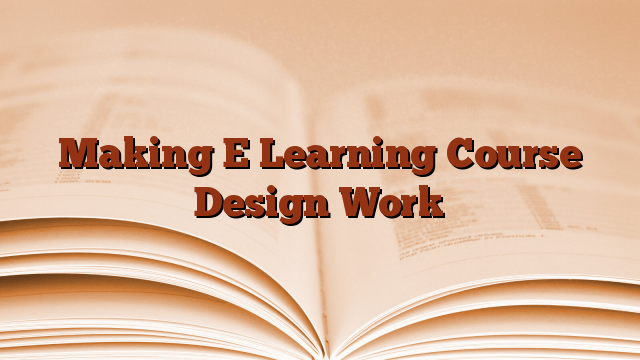Effective and successful e-learning is the goal of every course designer. But ask most learners, and those two words won’t immediately spring to mind when describing their experience of taking an e learning course.
While not all e-learning methods are terrible, too many examples are; and as most learners will tell you, these bad examples are boring. Usually dead boring. So what can we do with our e-learning course design to ensure it works and is successful for both learners and the organizations they work for?
Most e learning course designers want to make their e-learning interesting and engaging, and many are looking to authoring tool interactions and multimedia to help them do this.
At first glance, this seems like a good solution. After all, having learners do something every few screens of the course must be better than just reading content, right? First yes. The problem with this approach, however, is that learners get bored easily. For example, dragging and dropping an object across the screen might seem fun and interesting the first few times, but after you’ve done it twenty times, it doesn’t seem so clever anymore.
In fact, it doesn’t take long for learners to realize that using multimedia and interactions is really just a way to cover up a deeper problem – too much focus on the content.
When course designers create classroom training, they have many options. It’s relatively easy to create imaginative exercises and classroom activities when you know you have a group of people who can engage and interact with each other.
As an instructional designer faced with a blank computer screen, the challenge is far greater. How do you make this screen interesting and engaging for your learners to view without spending a lot of money and taking months of development?
Chances are that you will take the current conventional route and fill that screen with content and then add something like an image, graphic or interaction to make it more attractive and interesting.
If you choose this approach (and most designers do), you’ll likely quickly recognize the need to keep many screens of content well-organized and structured. Before you know it, you’re quickly becoming enmeshed in a content-centric development approach.
And once you start down that path, you’re well on your way to creating the online equivalent of a glorified book or high-end PowerPoint presentation. Although both end results might look very professional and attractive, they are probably not suitable for effective learning.
Instead, e learning course designers would be much better off shifting their attention away from highly structured content with added multimedia content and interactions, and instead focus on creating meaningful scenario-driven learning approaches that are both memorable and engaging for learners are motivating.
Thanks to Andrew T Jackson

Leave a Reply